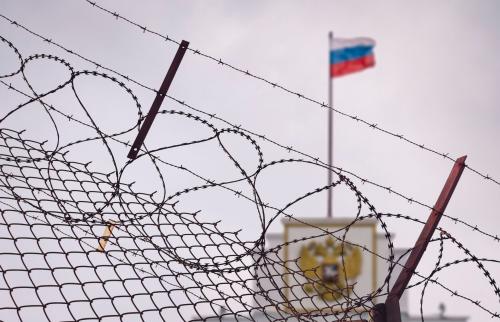The crisis in Ukraine once again revived the fierce debate about Europe’s dependence on Russian energy resources. Similar to 2006 and 2009, when physical supply disruptions of natural gas took place, this crisis too will spur European integration. Arguably, though unintended, this makes Russian President Putin one of the most explicit enthusiasts of the European integration project of the last decade. On February 25, the European Commission published its plans to form an Energy Union. Among many other things, it aims to structurally diminish European dependence on Russia as a supplier of energy resources, which according to many Russia has used as a political tool.
The debate whether or not energy resources can and have been used as a ‘weapon’ has been long and ongoing. Many analysts have pointed at the different tariffs for natural gas that Gazprom charges throughout Europe and concluded that this is linked to a political agenda. Others, including Jonathan Stern of the Oxford Institute for Energy Studies, have concluded that labeling this type of behavior as ‘political’ is analytically problematic, because it is difficult to make an explicit link between Gazprom’s pricing behavior and the Kremlin’s agenda. Stern has a point. Gazprom’s behavior in Europe has much more to do with its position and market share in the respective national European markets. Costs are highest where there is a lack of competition and market development. The notion that Gazprom’s and the Kremlin’s objectives are one and the same in all situations, also has to be questioned.
As the European integration process proceeds, the effects of lack competition become all the more apparent. In Northwestern Europe, dependence on Russian energy resources was never a real concern. Was that because European leaders always politely agreed with the Kremlin and in doing so earned better treatment? Maybe, but the more compelling argument is that it was because these member states had access to alternative energy resources, e.g. domestic production (from the Netherlands, Denmark, the UK), or other external suppliers (most prominently Norway, and later also access to liquefied natural gas, or LNG).
Since 2009 a serious push for market integration has been under way, spurred by the supply disruption in that year. Practically, that means that countries like Poland and the Czech Republic have, partly with support from the European Commission (EC), invested heavily in better infrastructure connections with its neighbors. This facilitates natural gas to flow freely throughout the European Union, and safeguards access to alternative resources in the case of an unexpected supply disruption. At this point, the Czech Republic has essentially become part of the German market, and dependence on one single supplier is no longer an issue. Poland can, once its LNG terminal comes on-stream later this year, attract 90% of its supplies from alternative sources, if it would be forced to do so. In 2014, Lithuania renegotiated its existing conditions for gas supply with Gazprom, when it had only announced the coming of an LNG import facility, again with EC support. Has Lithuania all of a sudden become a supporter of the Kremlin? I don’t think so.
All this is to suggest that if the Energy Union, a concept that will be fiercely debated over the coming months by different stakeholders, can help spur European integration by further connection national markets it would already be a success. There are only a handful of member states that are still dependent on one single source, and these should get access to alternative supplies, in order to avoid market power abuse. It should be addressed by closer cooperation between those states, and preferably not distracted by an outside supplier.
The Russian energy weapon against Europe, in short, barely exists, and arguably never did. Europe’s has achieved this level of energy security not by eschewing Russian gas, but by maintaining access to alternative supplies and increasing competition within Europe’s internal markets. There is more left to be done, but in this time of geopolitical stress, it is worth acknowledging what has already been accomplished. The bits and pieces in the internal energy system that deserve further improvement should be front and center in the current debates about an Energy Union. Further market integration, European cooperation, and strengthening and streamlining European regulation has delivered meaningful results, whereas harsh rhetoric generally does the opposite.
The Brookings Institution is committed to quality, independence, and impact.
We are supported by a diverse array of funders. In line with our values and policies, each Brookings publication represents the sole views of its author(s).




Commentary
The end of the Russian energy weapon (that arguably was never there)
March 5, 2015